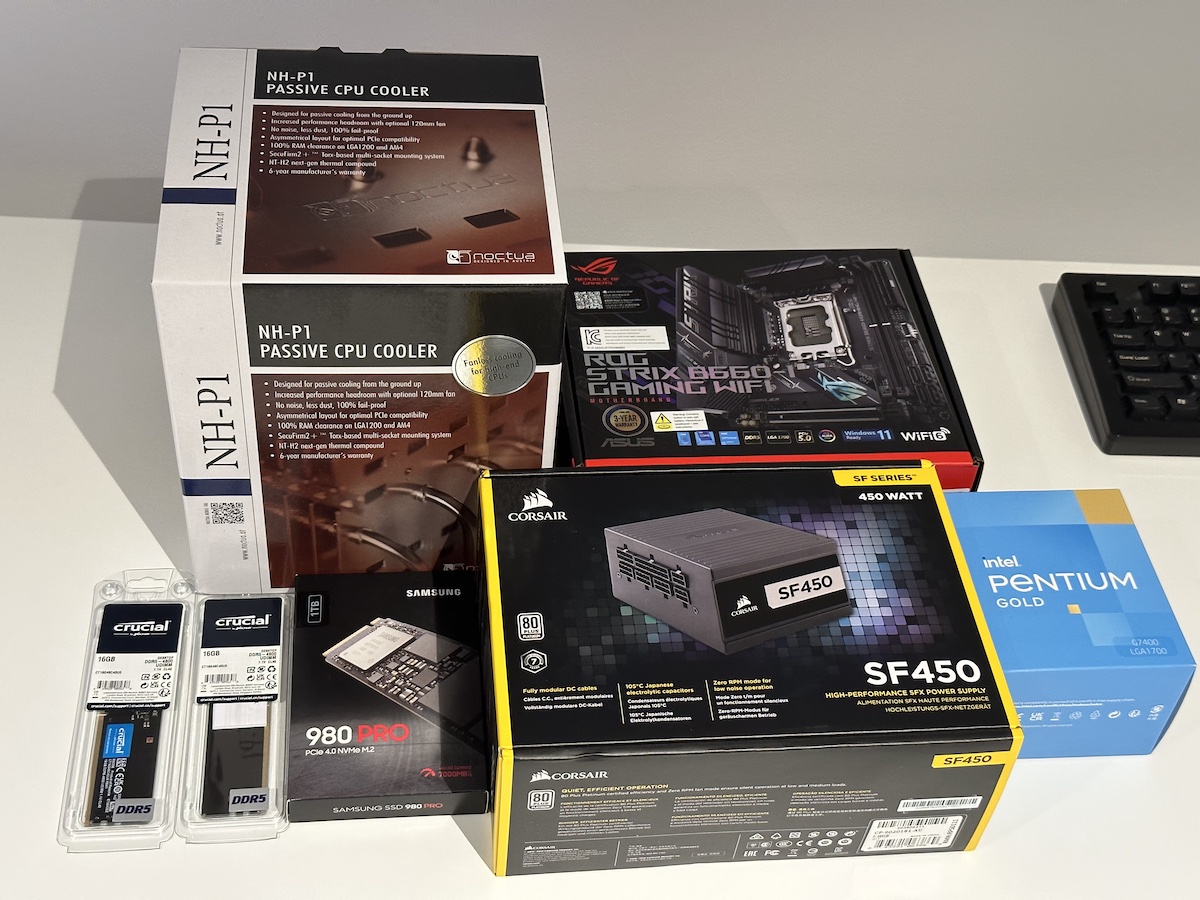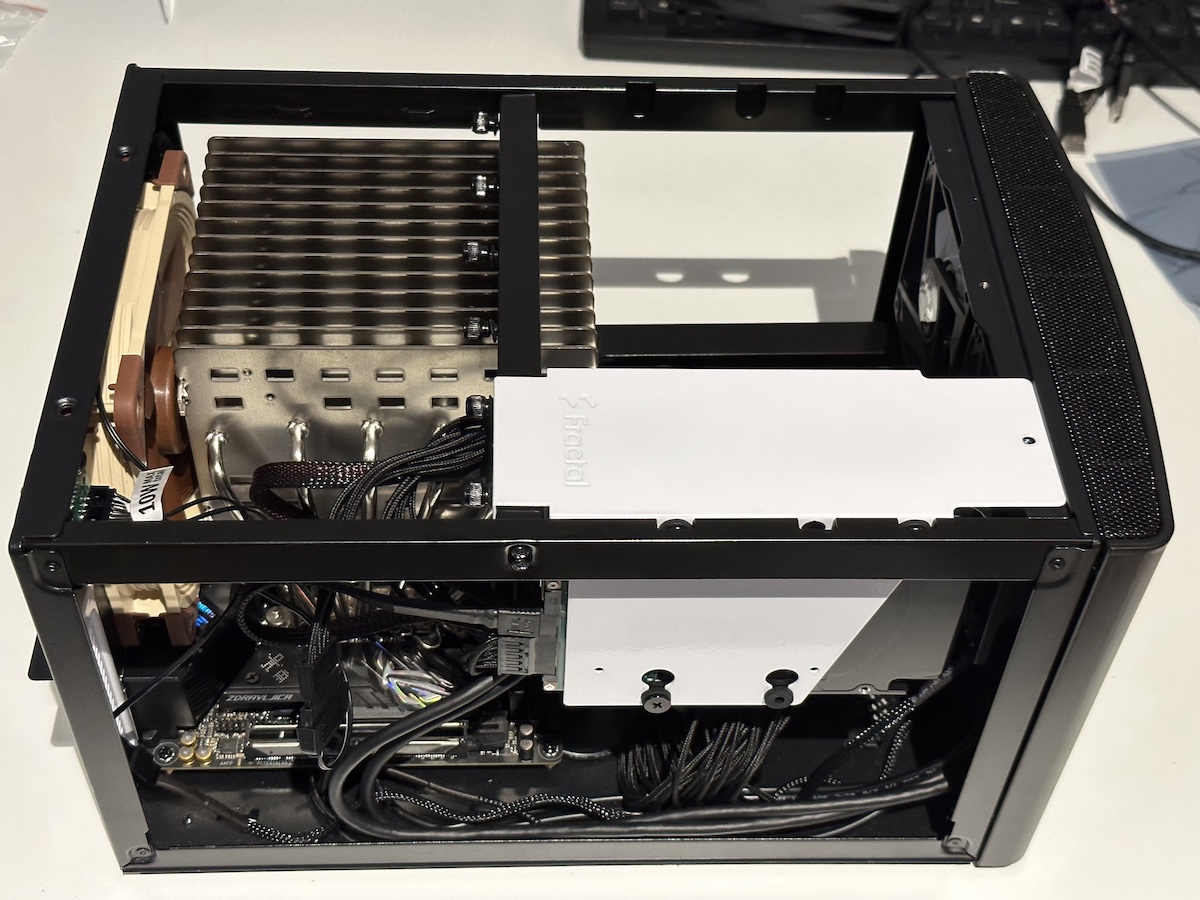The new NAS

It’s close enough to 2023 now, and off the back of my QNAP being on borrowed time, it’s time to think about a new NAS. I’ve had a couple of NAS iterations over the years, starting off with a $200 HP MicroServer, then the aforementioned QNAP, and now, whatever I want to go with next.
I could, of course, go with another consumer-grade NAS like a Synology. Or even a QNAP if I am feeling particularly brave. Apparently, Synology units with processors that had the LPC CLK issue weren’t affected to the same degree as QNAP units were, because they implemented their LPC interfaces at 1.8V, preventing 2V over that circuit being an issue like it was in the QNAP units. That and/or in combination with a firmware update that somehow mitigated the issue, meant that a Synology unit would have been the more reliable choice at the time, and we wouldn’t even be having this discussion if I had purchased a Synology instead of a QNAP back in 2016.
Alas, I did, and we are.
Which brings us back to the original question: what kind of a NAS do I want in 2023, that will hopefully last 5-7 years, if not more?
I’ve been thinking about this for a while now. There are definite, distinct advantages to having an all-in-one unit like a QNAP or Synology. You get the smallest possible chassis, minuscule power usage, and the entire software experience that buying a QNAP or Synology gets you, which means that even if you’re going to run your own Docker containers and just use the software to manage your storage, it’s definitely a more cohesive, user-friendly experience compared to rolling your own OS. But even after all that, I’ve been drawn to the idea of building my PC to serve NAS duties for a while now.
Why? It comes down to hardware, both in terms of choice and flexibility.
Buying a consumer-grade NAS like a QNAP or Synology means you’re buying into their ecosystem, with all of the advantages and disadvantages that entails. Yes, you can upgrade the RAM and install your own drives but that’s about it in terms of upgrades. With the exception of some of their pricier units, you can’t drop-in a PCIe card to add discrete graphics, or more M.2 drives, or even 10 GbE, if that ever becomes a thing at home. Maybe it will, maybe it won’t.
There are some Synology units that let you buy a PCIe expansion card that lets you add 10 GbE as well as more M.2 slots (in addition to the ones you already have), by the time you pony up for one of the pricer Synology units and the PCIe expansion card, you’ve basically spent as much as you would have if you picked your own parts and built your own PC from scratch, with none of the benefits of having custom hardware. It’s a trade off. I think it makes way more sense to buy a QNAP or Synology NAS, compared to building your own, than it does for you to buy a pre-built gaming PC from a major computer retailer like Dell or HP, purely because you’ll get more value out of a consumer NAS that you do out of a gaming PC that uses non-standard parts and layouts. You’re far more likely to want to upgrade your gaming PC within its expected lifetime than you are your own NAS, and you’ll appreciate standard PC components at that point, way more than you would if you were to upgrade your NAS. But I digress, and that’s a topic for another time.
When you’re building your own NAS out of commodity PC hardware, you have the complete freedom to choose which standard PC components you want, and the flexibility that affords you down the line. You might not ever need to upgrade your QNAP or Synology CPU in the lifetime of your NAS — but don’t you wish you could, when something better comes along?
But if there was a single reason I wanted to build my own NAS, it comes from being able to have access to hardware transcoding. Specifically, Intel Quick Sync Video.
While video transcoding isn’t generally a problem for me right now, that’s not to say it won’t be in the future. The Celeron J1900 in my current QNAP supports Quick Sync, and I haven’t had an issue streaming most of my content to iOS devices via Plex due to the wonders of direct play and most of my content being in a format that’s compatible with my devices. But between various CPU architectures, Quick Sync support for different codecs and formats varies. My current CPU, while it supports H.264, will only support decoding HEVC H.265, not encoding it, with zero support for newer video codecs like VP9 or AV1, or even 10 or 12-bit HEVC H.265 which is sometimes used by HDR versions of those videos. I don’t currently have Quick Sync video working on my current QNAP, but that is probably a configuration issue on my part; it’s entirely possible I haven’t set it up correctly in the Plex container.
Not supporting hardware-accelerated video encoding/decoding means we’re back to software decoding. And if YouTubers are to be believed, AV1 is going to be the next big thing, so even if we have to wait for a couple of years for it to be adopted by content farms, won’t I be glad I’ll have picked a 12th gen CPU that can handle decoding AV1 in hardware, as opposed to some Ryzen chip that would have had to rely on sheer CPU grunt to do software encoding?
While this might not be a big deal right now, it’ll matter if everyone starts using the royalty free, and even more efficient AV1 format. If that happens within the remaining lifetime of my QNAP, that’ll be an issue for me because it will mean I’m back to software decoding everything. I’m using software transcoding now, and it’s an extremely poor experience on a quad-core 2.0GHz CPU, even on my local network. The good news is, only Intel Arc has access to AV1 hardware encoders, which means everyone else has to throw CPU grunt at the problem, if they want to encode their content in AV1.
The other main advantage of rolling your own NAS hardware is that you can run whatever OS you want on it. While there are technically ways you can run other OSes on QNAPs or Synology units, it’s a hack. Building my own NAS lets me choose between straight Linux, like whatever version of Ubuntu that I ran on my HP Microserver, or the more storage-focused flavours of Linux/BSD like Unraid or TrueNAS. TrueNAS in particular is interesting because it is known for natively implementing OpenZFS, which is generally regarded as the best storage-focused filesystem. I don’t currently have a need to run any of the crazier storage configurations afforded by ZFS as I’ll be limited by the hardware and case that I’ve chosen (at least to begin with), but it’s nice to know they’re an option, if I decide to do that later on down the track.
So this is my new NAS.

| Type | Item | Price |
|---|---|---|
| CPU | Intel Pentium Gold G7400 3.7 GHz Dual-Core Processor | $129.00 @ Computer Alliance |
| CPU Cooler | Noctua NH-P1 Fanless CPU Cooler | $99.00 @ Centre Com |
| Motherboard | Asus ROG STRIX B660-I GAMING WIFI Mini ITX LGA1700 Motherboard | $349.00 @ BPC Technology |
| Memory | Crucial CT2K16G48C40U5 32 GB (2 x 16 GB) DDR5-4800 CL40 Memory | $189.00 @ Computer Alliance |
| Storage | Samsung 980 Pro 1 TB M.2-2280 PCIe 4.0 X4 NVME Solid State Drive | $199.00 @ Austin Computers |
| Case | Fractal Design Node 304 Mini ITX Tower Case | $149.00 @ Scorptec |
| Power Supply | Corsair SF450 450 W 80+ Platinum Certified Fully Modular SFX Power Supply | – |
| Case Fan | Noctua A14 FLX 68 CFM 140 mm Fan | $44.00 @ Umart |
| Prices include shipping, taxes, rebates, and discounts | ||
| Total | $1158.00 | |
| Generated by PCPartPicker 2022-12-29 01:06 AEDT+1100 |
It’s my first-ever mini-ITX build, and the only thing I would change about it is swapping out the passive CPU cooler for something more practical, if noisier. I thought it would be cool, pun not intended, to have my cheap-and-cheerful Pentium CPU cooled passively seeing as it would likely be idle most of the time, and while that’s a good idea in theory, the sheer size of Noctua’s passive CPU cooler makes it completely impractical for a mini-ITX build. It dwarfs every other component in the PC and overhangs the motherboard in whatever orientation it is installed in, and as-is, I can only install two 3.5-inch hard drives out of the six bays that I have, due to how much space the NH-P1 takes up. I wouldn’t recommend it.
The other thing that I’m not super happy about is 12/13th-gen Intel motherboards in the mini-ITX form factor, both in terms of features and onboard SATA ports. I couldn’t find a LGA 1700 mini-ITX motherboard that had more than four SATA ports no matter how much I was willing to pay, which means I’ll only be ever to fill four out of the six hard drive bays that I have. There are ways around this. My motherboard has two M.2 slots, so I could buy a M.2 to 4-6 SATA port adapter, which would give more SATA ports than I can comfortably use. Because my board doesn’t have front panel USB-C, I might be able to get a converter to use that as another SATA port. And if it came down to it, I could pick up a PCIe HBA card which would give me more SATA ports again, at the cost of using the only PCIe slot I have in my system, which means I can’t then get a 10 GbE card or a PCIe adapter for even more M.2 slots. That being said, this is only a minor consideration overall, and four SATA ports is plenty for the time being.
If I was willing to make a sacrifice in size, I could have chosen a bigger case, with more hard drive bays. That would have let me choose a standard, ATX-sized motherboards as well, with more than four SATA ports. But hard drives seem to be going the way of the dodo in consumer systems, and there aren’t that many cases that have more than a few bays. Plus, even if I wasn’t buying a QNAP or Synology, I still wanted to have a small-ish, compact NAS, not some kind of NAS-in-a-PC-case.
But overall, I’m pretty happy with it. I’ll swap out the cooler when I need to put some more drives in it, and maybe drop in an expansion card in a few years. I’m excited to be able to play around with TrueNAS, even if I don’t think I’ll be making the most of out some of the cooler features of ZFS like snapshots, separate cache or log devices, or even replication, the whole point is that I can. Likewise, I can’t see myself swapping out the motherboard or CPU for a long time, but the whole point is that I can.
And that’s what building a custom NAS is all about.